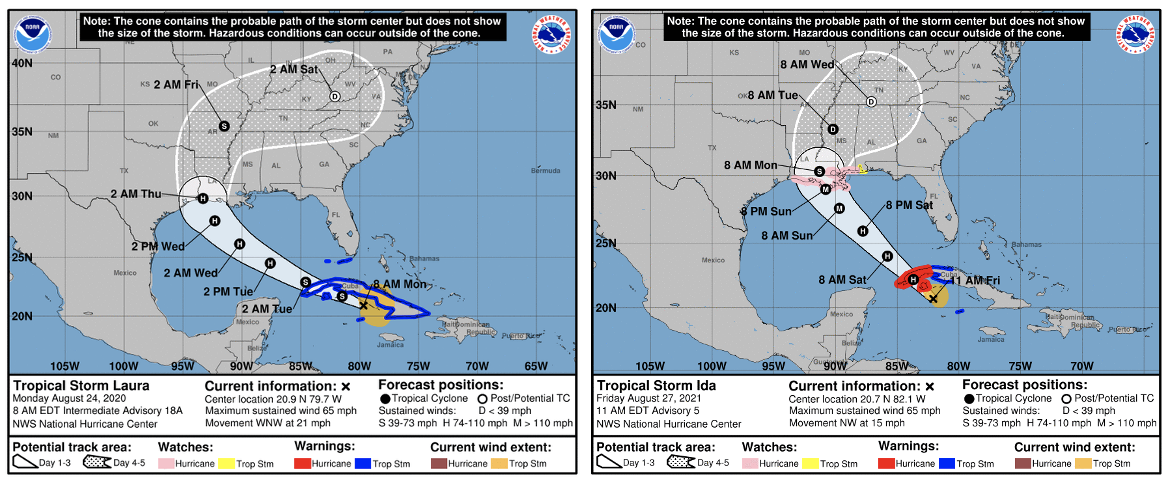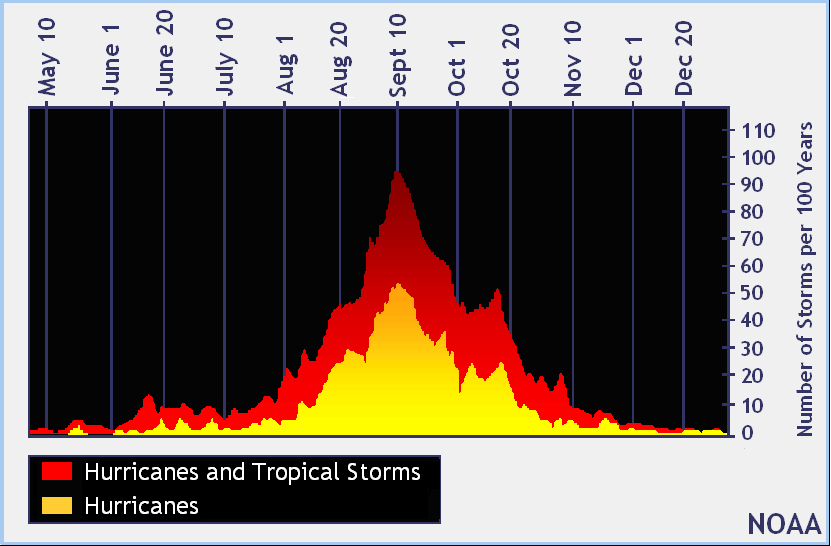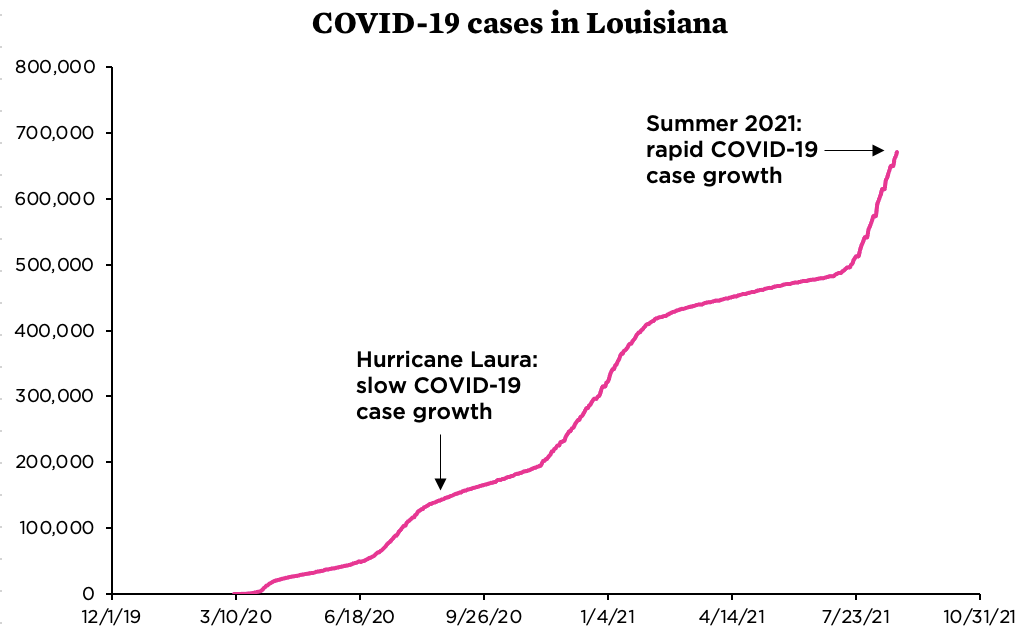A storm system currently named Tropical Storm Ida is expected to strengthen into a hurricane and make landfall in Louisiana early next week after bringing life-threatening rain and flooding to Cuba and other Caribbean islands. For Louisiana communities still rebuilding from three hurricanes–Laura, Delta, and Zeta, which struck the coast last year–the latest forecast threatens to bring additional damage to the region and set recovery efforts back. But with new COVID-19 cases currently at some of their highest rates yet in Louisiana and other Gulf Coast states, and with hospitals already overwhelmed, public officials are worried about the region’s ability to maintain public safety in the face of a hurricane.
Louisiana weathered three hurricane strikes last year, when the pandemic was raging and vaccines were not yet available. This year, despite the availability of vaccines for people ages 12 and up and despite the presence of the highly contagious Delta variant of the virus, COVID-19 vaccination rates in Gulf Coast states remain stubbornly below national averages. So we’re about to find out what it looks like when the peak of hurricane season coincides with the crest of the latest wave of COVID-19.
Yes, this is kind of like Groundhog Day
It was almost exactly one year ago this week that Louisiana was struck by Hurricane Laura, the strongest hurricane on record to strike southwest Louisiana. Evacuees from coastal communities returned to their neighborhoods after the storm to begin rebuilding their homes and lives. As they did, they were met with a heat wave in which the heat index reached roughly 110°F, power outages that lasted for weeks, and, in many cases, a lack of access to drinking water.

The Atlantic hurricane season tends to peak in early September. Between that and the fact that 91 hurricanes have affected Louisiana since record keeping began in the early 1850s, it is not terribly surprising that Louisiana is facing a hurricane strike this month. Statistics aside, though, four hurricane strikes in the span of 13 months is brutal. And while the heat index is not forecast to be particularly high along the Gulf Coast next week, even typical levels of heat in the region can become dangerous if the power is knocked out and residents do not have access to fans or air conditioning.
But what is particularly worrisome about this latest storm’s path is that the COVID-19 landscape is now notably worse along the Gulf Coast than it was when hurricanes struck last year.

With COVID-19, it’s worse than Groundhog Day
When Hurricane Laura hit, Louisiana was in between COVID-19 waves, averaging about 600 new cases per day, and no COVID-19 vaccine was available. The latest statistics (as of August 25, 2021) show that Louisiana is now averaging more than 4,500 new cases per day, with 99% of cases caused by the Delta variant as of the week of August 15th. Hospitalizations have also peaked at rates well above the surges that occurred this past winter.

Rates of cases, deaths, hospitalizations, and vaccinations in states along the Gulf Coast are currently much worse than the national average. COVID-19 case rates are twice the national average and death rates nearly three times the national average in Florida, Louisiana, and Mississippi. Hospitalization rates are twice the national average in Alabama, Florida, and Louisiana. And in Alabama, Louisiana, and Mississippi, 40% or less of the population is vaccinated.

It did not have to be like this
Hurricane season is predictable: We know when during the year hurricanes can usually be expected, and with NOAA’s seasonal forecasts, we also know whether we can expect the hurricane season to be more or less active than normal.
The result of widespread vaccine resistance in a state is also predictable: Recent data from the Department of Health and Human Services showed that COVID-19 hospitalization rates were nearly four times higher in the 10 states with the lowest vaccination rates than in the 10 states with the highest vaccination rates. In Louisiana, roughly 9 in 10 hospitalizations and nearly all COVID-19 deaths in recent weeks have been among unvaccinated people.
But there’s an important difference between hurricanes and waves of COVID-19: preventability. We cannot prevent a hurricane from happening, but we can prevent serious COVID-19 cases and COVID-19 deaths with widespread vaccination. It did not have to come to this, where we’re anticipating a hurricane bearing down on a state in which roughly one in 10 residents currently has COVID-19. It’s one of the many scenarios of concern my colleague, Adrienne Hollis, outlined in a post at the start of hurricane season this year, but it did not have to come to pass.
With just a few days between now and when Ida is expected to come ashore, it’s time for Gulf Coast residents to be heeding local warnings and preparing—including by making plans for staying COVID-safe over the course of the storm.
To prevent future collisions of COVID-19 and hurricanes, though, vaccination is critical. If you’re still unsure about the COVID-19 vaccines, check out our COVID-19 vaccines FAQ. But vaccinated or not, our hearts are with those on the Gulf Coast. Stay safe.

